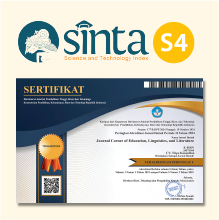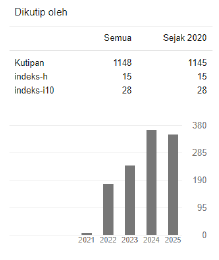Exploring the Impact of Using Instagram to Develop Saudi EFL Learners' Vocabulary
 https://doi.org/10.54012/jcell.v2i4.141
https://doi.org/10.54012/jcell.v2i4.141
 Abstract views: 1175
Abstract views: 1175
 PDF downloads: 864
PDF downloads: 864
Keywords:
Instagram, vocabulary, English as a foreign language, Saudi EFL learnersAbstract
The current paper aims to investigate the impact of using Instagram to develop vocabulary among Saudi EFL learners. With a descriptive research design, this paper filled a gap in the literature by examining the role of Instagram in building vocabulary among Saudi EFL learners. Therefore, quantitative and qualitative methods were employed. To collect data, the researcher used an online questionnaire and two different types of interviews. The online questionnaire included both closed-ended and open-ended questions, involving 217 Saudi EFL learners. Regarding the interviews, structured interviews were carried out with six Saudi EFL learners to collect detailed information. Additionally, to acquire more information, semi-structured interviews involved four English tutors on Instagram. As a result, the findings revealed that Instagram plays a key role in developing EFL learners' English vocabulary and can be used as a tool to expand their vocabulary. The findings of this study add to prior research in related fields and serve as a resource for researchers studying English language instruction and acquisition as well as EFL learners.
Downloads
References
Agustin, R. W. & Ayu, M. (2021). The impact of using Instagram for increasing vocabulary and listening skill. Journal of English Language Teaching and Learning, 2(1), 1-7.
Alshabeb, A. & Almaqrn, R. (2018). A study of EFL Saudi students' use of mobile social media applications for learning. Arab World English Journal (AWEJ) Special Issue on CALL (4). https://dx.doi.org/10.24093/awej/call4.17
Ariantini, K. P., Suwastini, N. K. A., Adnyani, N. L. P. S., Dantes, G. R., & Jayantini, I. G. A. S. R. (2021). Integrating social media into English language learning: How and to what benefits according to recent studies. NOBEL: Journal of Literature and Language Teaching, 12(1), 91-111.
Creswell, J. (2014). Educational research: Planning, conducting and evaluating quantitative and qualitative research. Pearson.
Erarslan, A. (2019). Instagram as an education platform for EFL learners. Turkish Online Journal of Educational Technology - TOJET, 18(3), 54–69.
Farrokh, P., & Sharifi, F. (2019). On the impact of determination and compensation strategies on language learners’ vocabulary development. International Journal of Instruction, 12(3), 105–118.
Im, Jae-hyun. (2020). Exploring English learning on three mobile platforms: A new literacy studies perspective. Multimedia-Assisted Language Learning, 23(2), 75–97. https://doi-org.sdl.idm.oclc.org/10.15702/mall.2020.23.2.75
Kamal, A. (2019). Learning English vocabulary through Instagram. [Master's thesis, University Negeri Makassar]. Eprints Software. http://eprints.unm.ac.id/id/eprint/14387
Khan, N. (2018, July 23). History and evolution of technology. The Nation. https://www.nation.com.pk/23-Jul-2018/history-and-evolution-of-technology
Putri, E. (2022). An impact of the use Instagram applications towards students vocabulary. Pustakailmu.id, 2(2), 1-11.
Rao, P. (2019). The impact of social media on learning English: a critical study in English language teaching (ELT) context. Research Journal of English, 4(2), 266-247.
Surmanov, S. & Azimova, M. (2020). Analysis of difficulties in vocabulary acquisition. Journal of Legal Studies and Research, 6(1), 144-153.
Van, L. K., Dang, T. A., Pham, D. B. T., Vo, T. T. N., & Pham, V. P. H. (2021). The effectiveness of using technology in learning English. AsiaCALL Online Journal, 12(2), 24-40.
Downloads
Published
How to Cite
Issue
Section
License
Copyright (c) 2023 Maha Saad Alotaibi

This work is licensed under a Creative Commons Attribution-ShareAlike 4.0 International License.
All articles published in the Journal Corner of Education, Linguistics, and Literature are licensed under the Creative Commons Attribution-ShareAlike License (CC BY-SA).

















